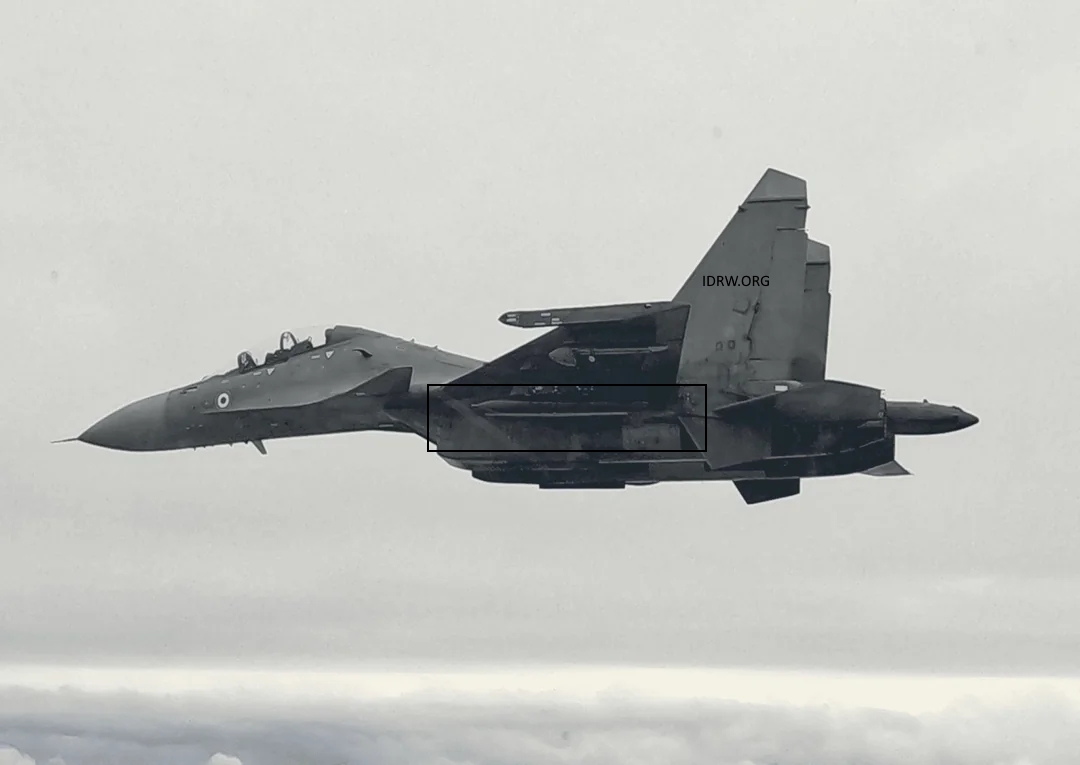SOURCE: IDRW.ORG


In a significant leap toward self-reliance in defense technology, the Indian Air Force (IAF) is integrating the cutting-edge Khagantak 225 glide bomb, a 243 kg precision-guided munition, with its formidable Su-30MKI fighter aircraft. Developed by Nagpur-based startup JSR Dynamics Pvt. Ltd., in collaboration with Bharat Electronics Limited (BEL), this indigenous weapon marks a historic milestone as the first glide bomb produced by India’s private sector. With advanced guidance systems, a potent warhead, and an impressive range, the Khagantak 225 enhances the IAF’s ability to conduct long-range, high-precision strikes while keeping its aircraft beyond the reach of enemy air defenses.
The Khagantak 225 is a long-range, stand-off glide bomb designed to deliver pinpoint accuracy against high-value targets. Weighing 243 kg, it carries a 108 kg warhead optimized for blast-fragmentation effects, making it ideal for engaging fortified structures, command posts, and other critical infrastructure. The bomb’s standout feature is its hybrid guidance system, combining Inertial Navigation System (INS) and Global Positioning System (GPS) for robust mid-course navigation, even in GPS-denied environments. In the terminal phase, a Mid-Wave Infrared (MWIR) seeker takes over, providing exceptional targeting precision by locking onto the heat signatures of designated targets.
When launched from a Su-30MKI cruising at an altitude of 12 km and a speed of Mach 0.8, the Khagantak 225 boasts an operational range of 180 km. This extended reach allows the IAF to strike deep into enemy territory while remaining outside the engagement zones of advanced air defense systems, significantly enhancing mission safety and success. The bomb’s aerodynamic design and glide ratio exceeding 12 ensure high maneuverability, enabling it to navigate complex terrains and evade countermeasures.
The development of the Khagantak 225 by JSR Dynamics underscores the growing role of India’s private sector in bolstering national defense capabilities. Founded in 2018, the Nagpur-based startup has rapidly emerged as a leader in precision-guided munitions, aligning with the government’s “Aatmanirbhar Bharat” (Self-Reliant India) initiative. JSR Dynamics designed the bomb’s body, control systems, and guidance architecture, while BEL contributed critical electronics and seeker technology. This public-private partnership exemplifies the synergy driving India’s defense innovation.
Air Marshal (Retd.) S.B. Deo, Managing Director of JSR Dynamics, emphasized the bomb’s advanced features, stating, “The Khagantak is a guided weapon with excellent aerodynamic performance and an AI-enabled seeker for autonomous target recognition.” The incorporation of artificial intelligence in the MWIR seeker allows the bomb to identify and prioritize targets independently, enhancing its effectiveness in dynamic battlefield scenarios.
The IAF has already awarded a contract to BEL for a limited number of Khagantak-243 glide bombs, signaling confidence in the system’s capabilities and paving the way for potential large-scale induction. This move highlights the IAF’s commitment to adopting indigenous solutions that reduce reliance on foreign defense imports.
The integration of the Khagantak 225 with the Su-30MKI, one of the IAF’s most versatile multirole fighters, significantly enhances India’s strategic deterrence. The Su-30MKI, with its long-range capabilities and ability to carry heavy payloads, is an ideal platform for deploying stand-off weapons like the Khagantak. The glide bomb’s 180 km range surpasses many existing munitions in the IAF’s arsenal, such as the DRDO-developed Gaurav glide bomb, which achieves a range of approximately 100 km. This extended reach provides the IAF with a critical edge in engaging targets across borders without exposing its aircraft to hostile air defenses.
The Khagantak 225 also addresses regional security challenges. With China fielding glide bombs like the LS and FT series (with ranges around 90 km) and Pakistan deploying the H4 glide bomb (approximately 120 km range), India’s development of a 180 km-range munition ensures technological parity and a strategic advantage. The bomb’s low radar cross-section (RCS) and stealth features further enhance its survivability against modern air defense systems, making it a formidable tool for both conventional and asymmetric warfare.
NOTE : Article cannot be reproduced without written permission of idrw.org in any form even for YouTube Videos to avoid Copy right strikes. Websites doing illegal reproductions will get DMCA and Legal Notices.